- TOP
- News & Events
- News
News
Ochanomizu University signs cooperation agreements with several boards of education in Iwate-ken and Kesennuma-shi, Miyagi-ken
Sawako Hanyu
President, Ochanomizu University
Ochanomizu University has signed comprehensive cooperation agreements with the Iwate-ken (Iwate Prefecture) Board of Education and other boards of education in prefectures, cities, towns, and villages stricken by the Great East Japan Earthquake and Tsunami. The agreements aim to promote mutual collaboration on various recovery efforts and contribute to the development of young children, the rehabilitation of local communities, and growth in the area.
Boards of education that have signed cooperation agreements with Ochanomizu University and corresponding agreement dates
| Boards of education that have signed cooperation agreements with Ochanomizu University |
Agreement dates |
|---|---|
| Noda-mura, Yamada-machi, Miyako-shi, Iwate-ken | July 17, 2012 |
| Iwate-ken | July 18, 2012 |
| Otsuchi-cho, Iwate-ken | August 21, 2012 |
| Kamaishi-shi, Iwate-ken | August 28, 2012 |
| Ofunato-shi, Iwate-ken | August 29, 2012 |
| Kesennuma-shi, Miyagi-ken Board of Education | November 16, 2012 |
The background behind the agreements
In November 2011, Ochanomizu University assembled a Great East Japan Earthquake and Tsunami Disaster Area Support Project Team and established its Great East Japan Earthquake and Tsunami disaster area support policies.
Great East Japan Earthquake and Tsunami disaster area support policies
- The support must effectively meet the needs of the affected areas.
- The support must represent Ochanomizu University and take advantage of the school's unique characteristics.
- The support must be well-planned from a medium- to long-term perspective.
- Support initiatives that involve students must respect the nature of the students' voluntary participation, work to ensure the students' safety, and contribute to the students' growth as individuals.
Based on these policies and investigations into disaster area needs conducted in advance with the Iwate-ken Board of Education, Ochanomizu University focused on developing a Science & Education Center that would drive efforts to provide science education support to elementary and middle schools damaged by the Great East Japan Earthquake and Tsunami.
In hopes of further enhancing and invigorating these support activities, Ochanomizu University and the Iwate-ken Board of Education signed a comprehensive cooperation agreement to govern and promote recovery efforts.
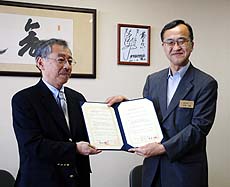
Vice President Mimizuka and Iwate-ken Board of Education Director Kanno hold the agreement (From the July 19, 2012 issue of the Iwate Nippo; image reprinted with permission from Iwate Nippo Co., Ltd.)
For more information on the agreements:
Ochanomizu University
Public Relations Office (Attn: Hiroshi Tomiyama)
2-1-1 Ohtsuka, Bunkyo-ku, Tokyo 112-8610, Japan
Tel: 03-5978-5104, 5105
Fax: 03-5978-5545
E-mail:
Overview
Recovery support activities (science education support)
A science classroom at the temporary middle school in Otsuchi-cho, Iwate-ken
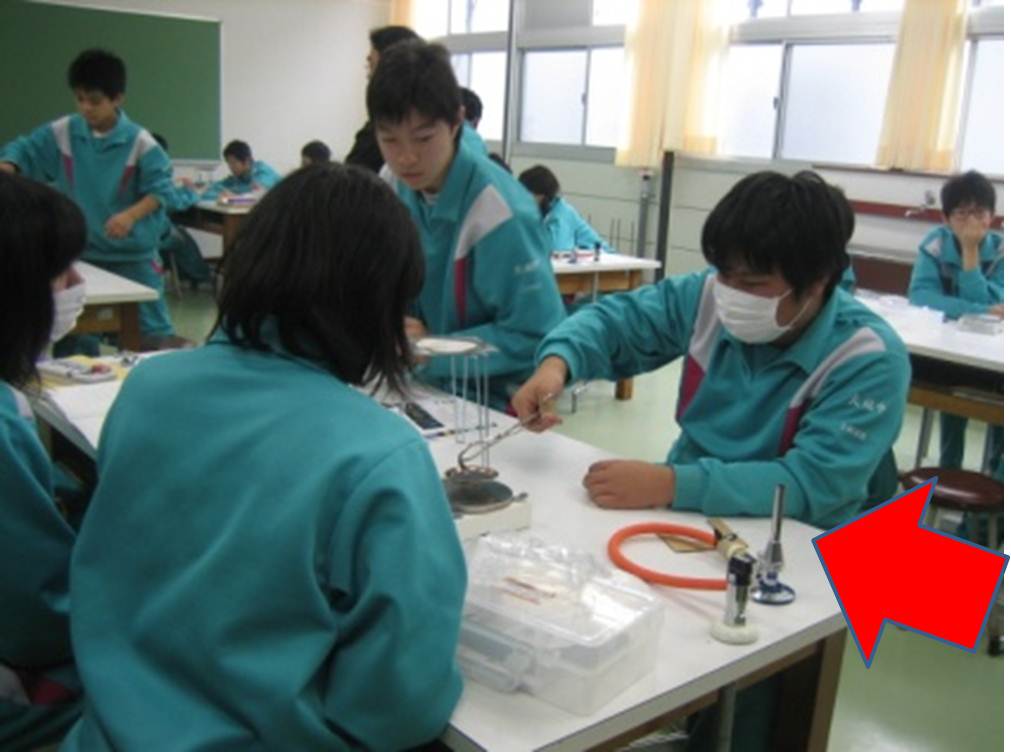
Students conduct science experiments with gas burners from Ochanomizu University
At the temporary elementary school in Otsuchi-cho, Iwate-ken (November 28, 2011)
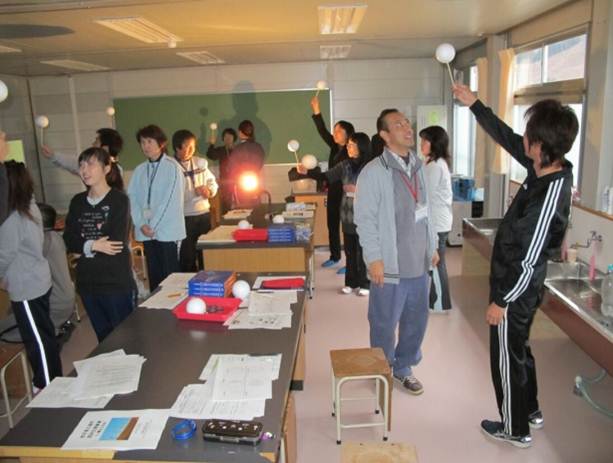
Science teacher training
Themes: The sun and the moon, the movements of the stars, and the generation and storage of electricity
(Training materials sent in advance via an express delivery service)
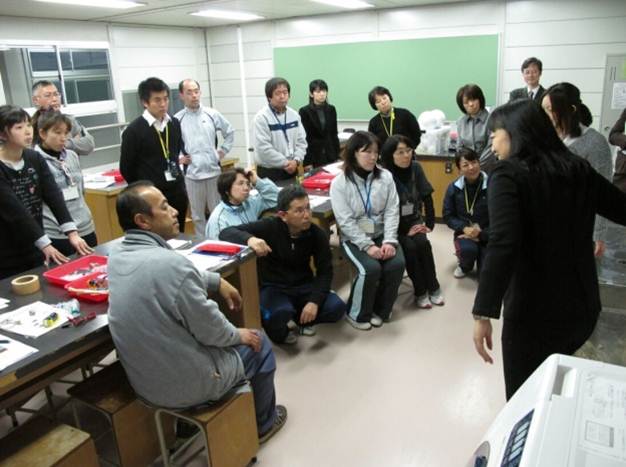
In Yamada-machi, Iwate-ken (November 29, 2011)
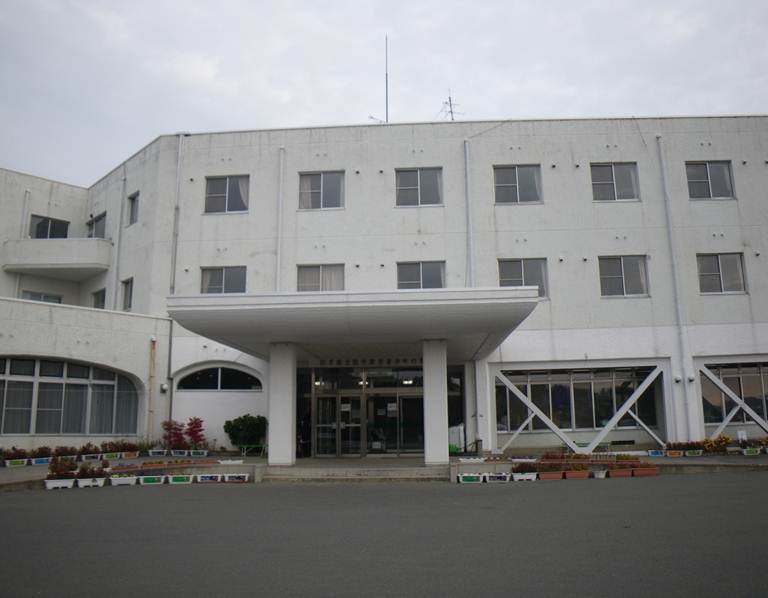
Funakoshi Elementary School, devastated by the disaster, is currently renting out the Prefectural Rikuchu Kaigan Youth Recreation Hall
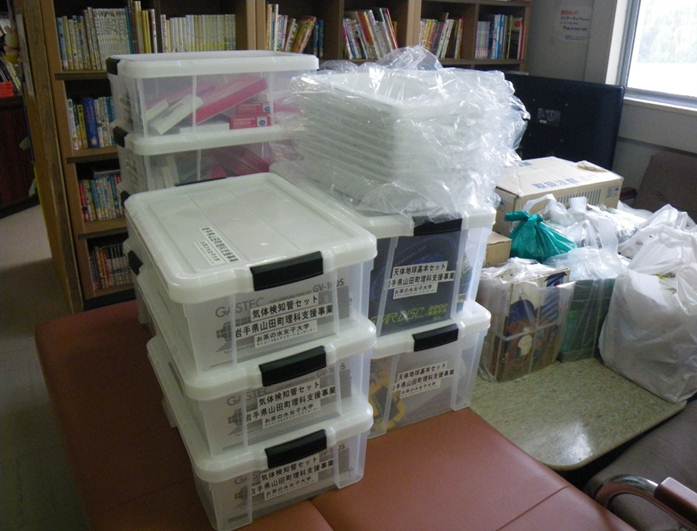
Science support materials from Ochanomizu University fill some of the limited available space (hallways)
Science teacher training at the temporary Funakoshi Elementary School site in Yamada-machi, Iwate-ken (November 29, 2011)
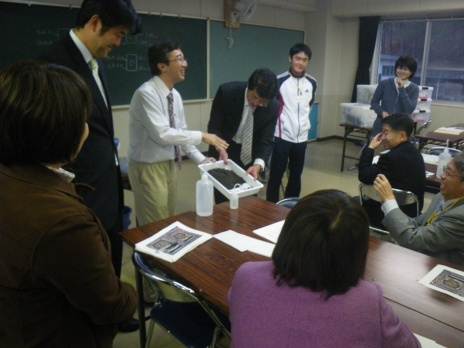
The training session drew 15 participants, with people from other elementary schools in Yamada-machi joining on the day of the event
Training themes: Flowing water and the sun and the moon
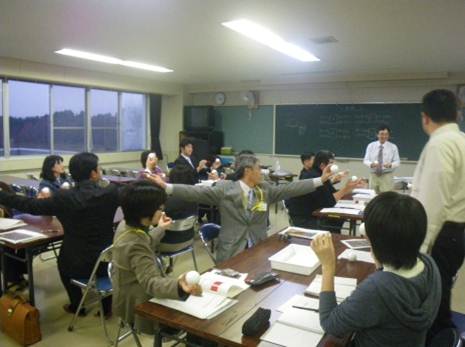
The temporary Funakoshi Elementary School in Yamada-machi currently occupies the Rikuchu Kaigan Youth Recreation Hall, which lacks proper science classrooms; on the day of the session, participants gathered and trained in one of the facility's conference rooms
Ochanomizu University developed experimental content that did not require a science classroom
Participating teachers learn about the "flowing water" experiment
Development efforts have created online teacher training methods (using iPad FaceTime), which went into operation in November 2011
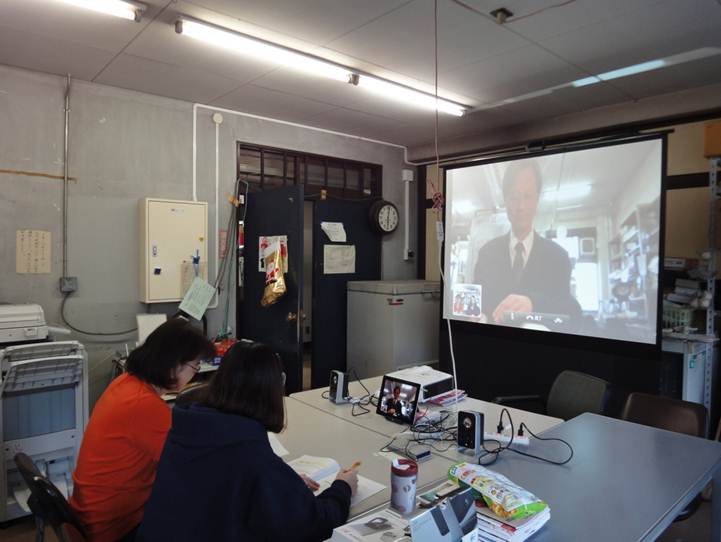
With an iPad hooked up to speakers and an LCD projector, teachers take classes using a monitor and full sound system
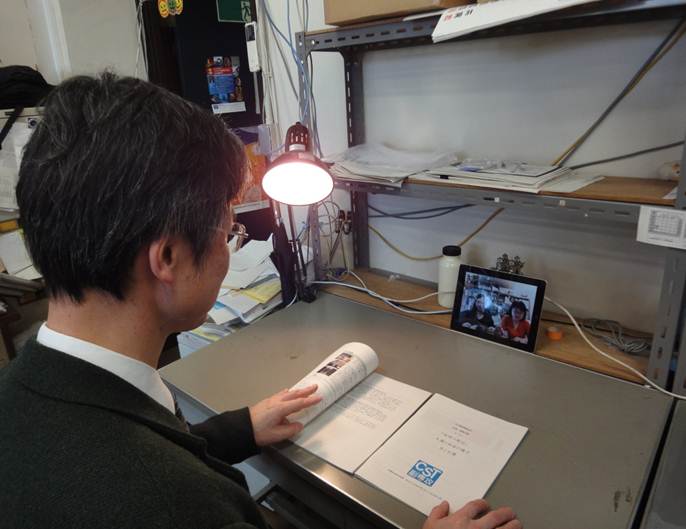
A lecturer
Ochanomizu University's unique studies and research projects on earthquake recovery efforts
During the 2011 and 2012 academic years, Ochanomizu University accepted submissions for "studies/research projects related to emergency support activities and earthquake disaster reconstruction in the wake of the Great East Japan Earthquake and Tsunami." The university selected eight project submissions in 2011 and 10 in 2012.
To help fulfill its social roles, the university is currently taking active steps to conduct studies and research on emergency reconstruction and disaster prevention initiatives designed to keep people safe and secure during and after disasters. These efforts cover a broad range of activities, including actual reconstruction support for disaster areas as well as psychological, physical, material, and environmental support.
- Science education recovery support
- Development of "visible radiation" teaching materials for school use
- Simulations of how Ochanomizu University might function as an evacuation center
- Community-oriented information infrastructure systems for collecting and exchanging useful information in disaster situations
- Geographical studies on evacuation/support spaces in Miyagi-ken and Fukushima-ken
- Promotion of the Japanese agro-food industry, development of emergency provisions for use in disaster situations, progressive research aimed at "flower education," and recovery plans for disaster area elementary schools designed from the perspective of educational seed environments
- Practical research on structures for providing food during disasters (taking advantage of the university's national registered dietician program)
- Post-disaster regional recovery and the roles of out-of-school education/welfare facilities
- Disaster area restoration and support through the reconstruction of social capital and public spaces
- The effects of the Great East Japan Earthquake and Tsunami on artistic/cultural activities (particularly dance) and corresponding recovery efforts
Ochanomizu University Homepage Steering Committee
2-1-1 Otsuka, Bunkyo-ku, Tokyo 112-8610, Japan
E-mail:
Copyright © OCHANOMIZU UNIVERSITY. All rights reserved.